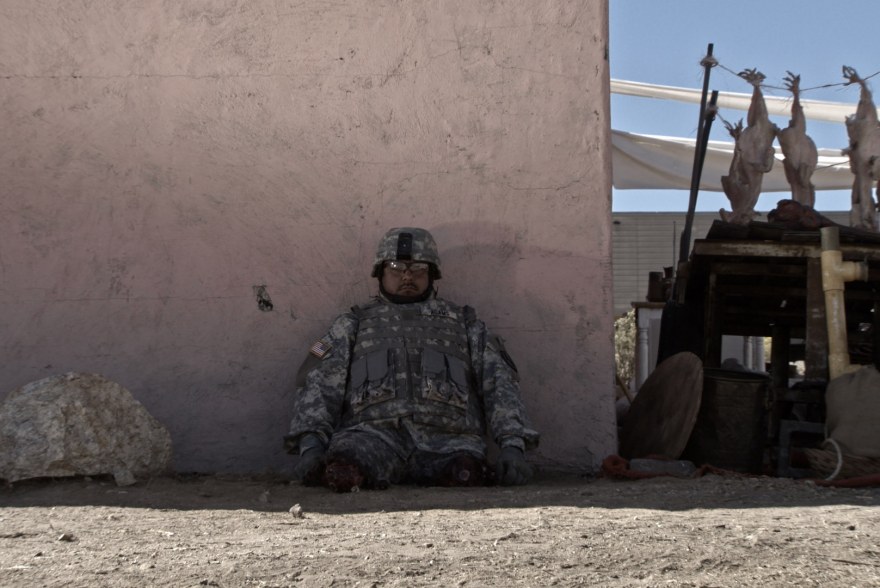Tea time with Fort Irwin
Interview with Quinn Else, director of Fort Irwin
How did you come across Fort Irwin? What motivated you to make it the focus of a short film?
Three years ago I met an American professor who told me he made money in the mid-2000s by pretending to be an Iraqi villager for United States military training. I was surprised by his bizarre story and discovered the ongoing military simulations conducted at Fort Irwin, one of the United States’ largest training centers. Once a month these simulations are opened to the public, so I visited. A group of excited spectators and I traveled to a sprawling fake village in the California desert, populated with Middle Eastern role players, some displaced from Afghanistan or Iraq, others American impersonators. I witnessed a tremendously realistic training exercise, filled with guns, explosions, Humvees, helicopters, blood, guts and lost limbs. The simulation was full of sound and fury, exactly like a Hollywood action film – all of the thrill with none of the consequence. Yet there were real stakes for the participants in the simulation, whether it was the soldiers training for combat or the (real) Middle Eastern role players reenacting violence they’d experienced. After being mesmerized by the surreal spectacle, I was surprised to learn that veteran amputees occasionally participated in these simulations as a form of therapy, directly reliving the violent loss of their limbs. As I wrestled with these revelations, I knew this was a story worth telling. Our hope with Fort Irwin was to capture warfare’s emotional toll by following a real victim of conflict into the simulation, both in the story and through the casting, to force the audience to actively imagine the main character’s psychological struggle, rather than passively and safely observe an exhilarating experience.
How did the shoot come about? Was the team at Fort Irwin happy for you to film there?
We filmed one scene at the real Fort Irwin, an establishing shot of the sign at the entrance of the base. For security reasons we weren’t allowed to film inside the military base. We filmed the military simulation action sequences on an outdoor set. The Army was supportive throughout the process of making the film. They are proud of their training.
Tell us more about the casting process.
For auditions, we reached out to Mediability, a talent agency that represents amputee actors. There is a sizable community of disabled actors in Hollywood, but they are often relegated to the backgrounds of films, as zombies or casualties. I always felt that the main actor had to be an amputee, but as I auditioned actors and interviewed veterans, it became apparent that the actor should be a veteran as well. Veterans’ descriptions of PTSD (post-traumatic stress disorder) diverged from how I’d seen it portrayed in films. In movies, sufferers of PTSD are often shown as violent, unstable and aggressive people who break dinner plates and punch holes in walls. But many real people described their PTSD as a nagging and debilitating sense of fear rather than a trigger for violence. Our lead actor Cristian Valle has a stoic personality. I felt his understated performance of PTSD was more interesting and truthful than a violent one.
What themes and genres do you like working with as a filmmaker?
I’m inspired by real people and places. Rather than make documentaries about these subjects, I like to reimagine them within genre films and to use established genre conventions as tools to explore subjective experiences. My first short film UFO Days was shot on location at a UFO festival in Wisconsin and starred a real-life UFO conspiracy theorist named Bill Johnson. Rather than simply document the person and place, the film imagined a science-fiction narrative in which Bill is visited by an extraterrestrial at the festival, immersing him in the ufology he espouses. Fort Irwin satirizes action film tropes by placing Cristian, a real person, into an obviously fake military reenactment, but photographs the reenactment like a Hollywood blockbuster. I’m more interested in the conflict between films and reality than trying to recreate reality in a film. I also think human experience is much stranger, scarier and mysterious than often depicted in American movies. I’m drawn to stories about unassuming people who are reshaped by sublime or uncanny events.
Are there any works of art or films that have inspired you?
Fort Irwin is inspired by the grotesque visuals and uncanny humor of Paul Verhoeven’s films, particularly Starship Troopers and Robocop. Otto Dix’s unflinching World War I etchings and paintings served as an inspiration for Fort Irwin’s unsentimental photography of Cristian’s injuries. Dix’s horrifying but darkly comic recreations of wounded veterans are singularly powerful. There is also a feature-length documentary about Fort Irwin made by Jesse Moss and Tony Gerber called Full Battle Rattle which eloquently captures the personalities of the citizens and soldiers involved with the simulations.
Would you say that the short film format has given you any particular freedom?
A shorter runtime allowed us to be to be aggressive with our editing pace, enhancing Fort Irwin’s frenzied tone. Our editor, Yiqing Yu, constantly escalated the emotional tension by steadily accelerating the film’s rhythm. Freed from juggling multiple acts and subplots, we could construct the film as one crescendo of rising anxiety.
Fort Irwin is part of International Competition I12.









